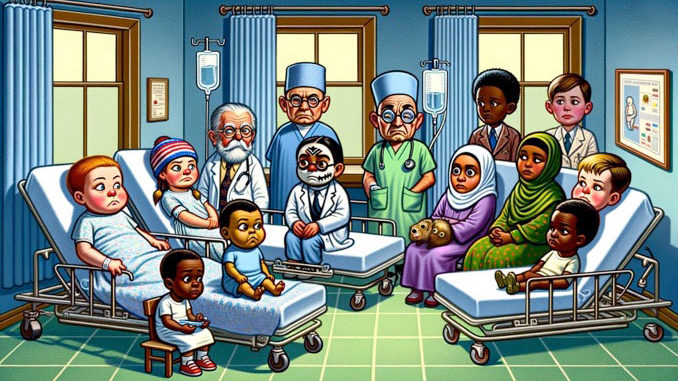
Critical Overview:
This news report highlights the case of a three-year-old girl, Lola-Rose Raine, who contracted a mysterious form of hepatitis that has affected nearly 200 children worldwide. After several days of her liver failing and her being put in a coma, Lola-Rose was saved by a liver transplant from her father. This report suggests that many of these cases of hepatitis are linked to adenoviruses, which are common in the UK, where over half the cases have been found. Despite this, experts suggest that there could be more cases that have gone unreported, and this could just be the “tip of the iceberg.” This news report is written in a straightforward manner with little to no critical analysis or context.
Risks and benefits of liver transplants in children
The use of living donors for liver transplantation is a complex and risky procedure, especially when the recipient is a child. This is because living donation carries the potential risks of morbidity and mortality for both the donor and the recipient. Furthermore, donor evaluation for living liver donation is extensive, requiring an assessment of the donor’s medical, surgical, and psychosocial health to ensure that they are suitable. Despite these risks, living donor liver transplantation has become a more widely accepted practice in pediatric liver transplant programs.
Limited knowledge about the nature of this disease outbreak
The cause of the hepatitis outbreak that has affected nearly 200 children worldwide is still unknown. While some cases have been linked to adenoviruses, this does not explain the entire outbreak. Furthermore, experts suggest that the number of cases reported so far could be an underestimation, as many cases are missed or misdiagnosed. This highlights the need for a better understanding of the nature and spread of this disease outbreak. Research studies should be conducted to identify the possible causes of this outbreak and to develop effective treatment and preventive measures.
The impact of COVID-19 on the outbreak
The outbreak of this mysterious form of hepatitis has occurred during the COVID-19 pandemic, which has had a significant impact on health systems worldwide. The pandemic has resulted in the postponement or cancellation of many medical procedures and appointments, which has led to a backlog of patients waiting for treatment. This could have contributed to a delay in the diagnosis and treatment of some cases of hepatitis, which may have worsened the outcomes for affected children. Furthermore, the pandemic may have led to an increased susceptibility to infections, as a lack of exposure to common infections during lockdown and social distancing measures could have left more children vulnerable to viruses.
Conclusion:
The case of Lola-Rose Raine highlights the importance of liver transplantation in saving the lives of children with liver failure. However, this case also raises concerns about the risks of living donor liver transplantation, especially in children. The outbreak of a mysterious form of hepatitis that has affected nearly 200 children worldwide is a cause for concern, and more research is needed to identify the causes and develop effective treatments and preventive measures. Furthermore, the impact of the COVID-19 pandemic on this outbreak and on health systems worldwide should not be underestimated, and measures should be taken to ensure that patients receive timely and appropriate care, even during a pandemic.




